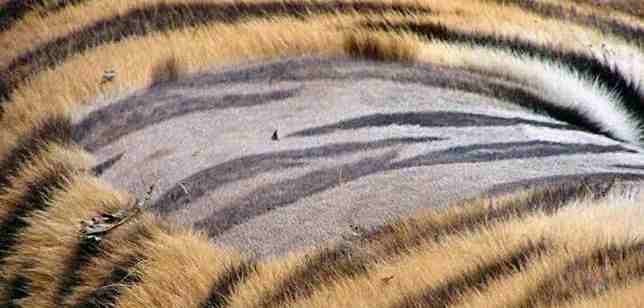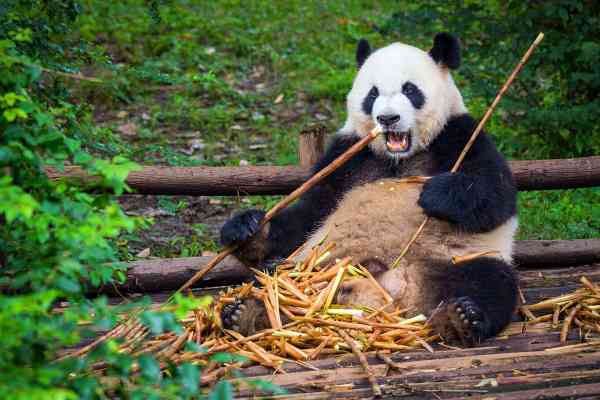Topics in Basic Science
What is science? Qualities of a scientist Resources from living things Resources from animals Importance of immunization Types of Carbohydrates: Monosaccharides and Polysaccharides Carbohydrates: Disaccharides and Oligosaccharides Len Academy Examination Questions for Basic Science, JSS2, 2nd Term Len Academy Examination Questions for Basic Science, JSS3, 3rd Term Len Academy Examination Questions for Basic Science, JSS3, 2nd Term Primates: Characteristics of Primates Effects of improper waste management Waste Management: Causes of waste in the society Concept of mass and weight Mineral Salts: Sources, functions and deficiencies of macronutrients Sources, functions and deficiencies of micronutrients Len Academy questions for Basic Science JSS1 Len Academy mid-term test questions for Basic Science JSS1, 2nd Term Microorganisms causing food, water and air borne diseases Vector borne organisms and the diseases they cause Bones of the Human SkeletonAcademic Questions in Basic Science
Which of the following diseases is associated with river blindness?
A. Anthrax
B. Lawnmower Disease
C. Onchocerciasis
D. Devil's Crunch
E. Trypanosomiasis
F. Tularemia
The vector for yellow fever is _____.
A. Aedes Mosquito
B. Female Anopheles Mosquito
C. Plasmodium
D. Flavivirus
E. Black Fly
F. Bacillus Anthracis
The bones of the head and face make up the skull. These bones are _____ in number.
A. 12
B. 14
C. 16
D. 18
E. 20
F. 22
Bacteria are not a constituent of our environment.
A. True
B. False
Below are types of drugs. Which of these is considered as pain killers?
A. Stimulants
B. Depressants
C. Opiods and Morphine Derivatives
D. Hallucinogens
E. Anabolic Steroids
F. Cannabinoids
Which of the following statement is false concerning drugs?
A. Drugs can be inhaled
B. Drugs can be injected directly into the bloodstream
C. Drugs can be eaten
D. Drugs exist exclusively in the forms of tablets and syrups
E. Drugs can be placed under the tongue
F. Drugs can be taken with water or another liquid
Vaccination involves a process of introducing pathogens or germs into a person in order to prevent such person from the diseases they cause.
A. True
B. False
With regards to the human health, foreign bodies are best regarded as _____.
A. International bodies
B. Antilators
C. Antibodies
D. Antigens
E. Antibiotics
F. Antidotes
A variety of useful resources or products utilized by humans are derived from plants and animals. Recall that plants and animals are classified as living things (or living organisms).
Resources from animals refer to useful materials derived from livestock and other animals for the beneficial use of man. These include cattle, sheep, goats, chickens, turkeys, pigs, horses, donkeys, camels, rabbits, elephants and so on.
Please read on resources from living things (plants) here.
The resources humans derive from animals and utilizes for their use are explained below:
1. Food (Meat, Fish and Egg): These are great sources of protein in our diet. They are important for growth and repair of worn out tissues. Example of animals reared for meat include pigs, chickens, turkeys, cattle, sheep and goats. Animals reared for fish are tilapia, catfish, carp, tuna and salmon respectively.
Please read how to start a home based fish farming here.
Eggs are great sources of protein in human diet, and these are derived from poultry. Poultry birds include chickens, turkeys, guinea fowl, ducks and geese.
2. Dairy Products: They are also referred to as milk products or lacticinia. Simply put, they are products made from the milk of cattle, nanny goats, ewe and water buffalo. Such products include yoghurt, butter, cheese and canned milk. They are highly nutritious to humans.
Please read various interesting facts for students here.
3. Hides and Skin: They are derived from the skin of animals after they had been dried, tanned and processed. Specifically, hides are gotten from the 'skin' of large animals like cattle, buffalo, horses, camels, crocodiles and alligators while skin are made from the 'skin' of small animals like rabbits, goats, snakes and pigs. They are used in the manufacture of leather products like belts, shoes, bags, furniture and sports equipment.
4. Beast of Burden: These are animals utilized by humans to carry heavy loads for their benefit. They can also function to pull heavy objects like a plow or cart for man's benefits. Animals like donkey, camel, horse, ox and mule are examples of beast of burden.
Please read on agricultural machines and their uses here.
5. Wool: They form a protective covering on sheep and other hairy animals like camelids, rabbits and goats. When processed in the textile industry, they can be used to make clothes, carpets, blankets and upholsteries.

Wool on Sheep
Note: About 90% of the world's wool are derived from sheep. The wool from one sheep is termed a fleece. Those from many sheep are referred to as clip.
6. Dung: A dung refers to the feces of animals like cattles, sheep, goats, pigs, horses and chickens. These can be used as organic manure on farmlands. In this regard, they add organic matter and other nutrients like nitrogen to the soil. They also increase the population of beneficial soil bacteria and fungi.
Please read on agricultural terms and meanings here.
7. Medicine: Certain products derived from animals may be used as medicines. Examples are calcium from animal bones, iron from animal blood, dessicated thyroid and heparin derived from pigs, premarin derived from horses, gelatin capsules derived from the cartilage of animals, vitamin D3 and lanolin from sheep.
You can attempt Len Academy questions on various subjects here.
8. Tusk: The tusks of elephant have been found to be precious to humans, especially in Africa. They are used to manufacture ivory, which has served as important cultural artifacts. They can also be used to make jeweleries.
Below are images of ivory made from elephant tusk.

Note: The African forest elephant (loxodonta cyclotis) is listed as critically endangered specie on the International Union for Conservation of Nature (IUCN) red list. They should therefore be protected and their indiscriminate killings prohibited by law.
9. Bones: The bones of animals can be processed into bone powder or bone paste. These may be used as health-care products, dietary supplements in animals and raw materials for other products. Bones may also be used to manufacture flutes, buttons, fertilizers and weapons.
Please read on bones of the human skeleton here.
10. Horns: Animal horns have shown to be useful especially in ancient times. They have been used as musical instruments, for example, the shofar made from the horn of a ram. Horns may also be utilized for drinking purposes in some traditions.
Please read on harmful traditional practices in Nigeria here.
The horns of antelopes have also been used to produce traditional Chinese medicines. Also, we see the usage of horns in furniture and home decorations.
11. Feather: Feathers are derived from poultry birds. They are used to manufacture decorative products like costume accessories, earrings, fans, masks, boas, flowers and hats.
You can check out Len Academy key points on various subjects here.
12. Seashell (Shell): Seashells contain large amounts of calcium carbonate (CaCO3). This can be used as food supplements, drugs, animal feeds (for poultry) and construction materials. They are also used for water purification process and in the manufacture of plastics and organic fertilizers.
Kindly share this article via the links below:

Please click here to contact Alfred if you require any of the following services:
If you need a standard website at an affordable price.
Online training on the academic subjects: biology, chemistry and basic science.
If you require an advanced smart school management system (web application) for your school.
Click here to read on Len Academy Smart School Software.
Please click here to follow Len Academy on Google News.
Amazing facts in Basic Science
According to scientific research, if the first tear drop comes from the right eye, it’s tears of joy. If it comes from the left eye, then it is as a result of pain
Dentistry is the oldest profession in the world. This is considered true because a research conducted by the University of Bologna, Italy on a 14,000-year-old skull found that one rotten tooth in the jaw had been deliberately scoured and scraped with a dental tool
Scientific research has it that the human nose can distinguish more than a trillion different odors

Tigers have striped fur. So also is their skin

The most common wild bird in the world is native to Africa, and it's the red-billed quelea with a population estimated to be around 1.5 billion
Of all animals, mosquitoes hold the record of killing most humans annually. They are responsible for the deaths of 725,000 - 1,000,000 persons yearly
Antibiotics fights and kills bacteria. However, they do nothing to a virus
All insects have six legs. However, dragonfly has six legs but can't walk
The chin is defined as the protruding part of the face below the mouth, formed by the apex of the lower lip. It is shown below:

Interestingly, humans are the only animals with chin

Ripe cranberries will bounce like a ball. For this reason, they are nicknamed 'bounceberries'. They will also float in water
Notable points in Basic Science
We have six classes of food. These are:
Carbohydrates
Proteins
Fats and Oils
Vitamins
Mineral Salts
Water
In humans, roughages are not classified as one of the classes of food. This is so because they aren't digested. Instead, roughages facilitate the movement of bowels in the large intestine (colon); and for this reason, they can become useful in treating constipation.
Food refers to anything that is ingested by living organisms, giving them nutrients and thus enabling them to stay alive.
As an instance, 99% of a panda's diet is bamboo. In this case, bamboo is considered as food to a panda since it provides a source of nutrient and keeps it alive. This is shown in the image below:

The only process in nature that actively enriches our atmosphere with oxygen is photosynthesis. Every other process like respiration, burning and combustion takes away oxygen from it. In addition, they introduce carbon(IV)oxide (CO2) into the atmosphere.
Photosynthesis is also the only process that takes away carbon(IV)oxide (CO2) from the atmosphere.
Photosynthesis is defined as a process by which green plants manufacture food by utilizing carbon(IV)oxide and water in the presence of sunlight.
Oxygen is given off as a by-product of photosynthesis. In regards to this, it is recommended that each person plants a tree.
Matter is composed of particles which can be:
Tightly packed together (as seen in solids).
Loosely packed together (as seen in liquids).
Completely separated (as seen in gases).
The movement of the particles of matter is a function of the overall kinetic energy present in them. You can think of kinetic energy as energy in motion.
An increase in the particles' vibrational, rotational or translational motion will imply an increase in temperature while a decrease in the particles motion (vibrational, rotational and translational) will mean a decrease in temperature. Based on this knowledge, we can therefore define temperature as the measure of the average kinetic energy possessed by the particles of matter.
Intelligence Quotient (IQ) is a score derived from a set of standardized tests developed to measure a person's cognitive abilities in relation to their age group.
IQ may also be defined as the ratio of mental age (MA) to chronological age (CA) multiplied by 100.
Below are some formulas pertaining Intelligence Quotient:
IQ = MA x 100 ÷ CA
MA = Mental age
CA = Chronological age
IQ above 100 = Brilliance
IQ that equals 100 = Average
IQ below 100 = Below Average